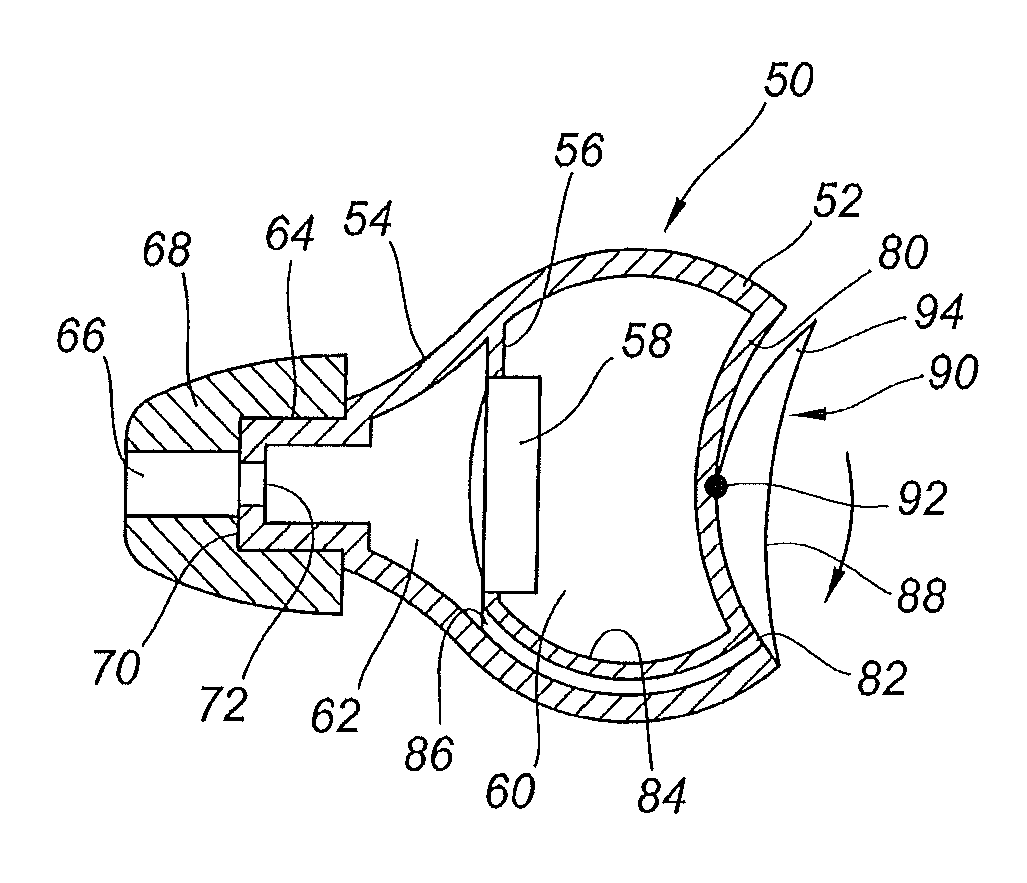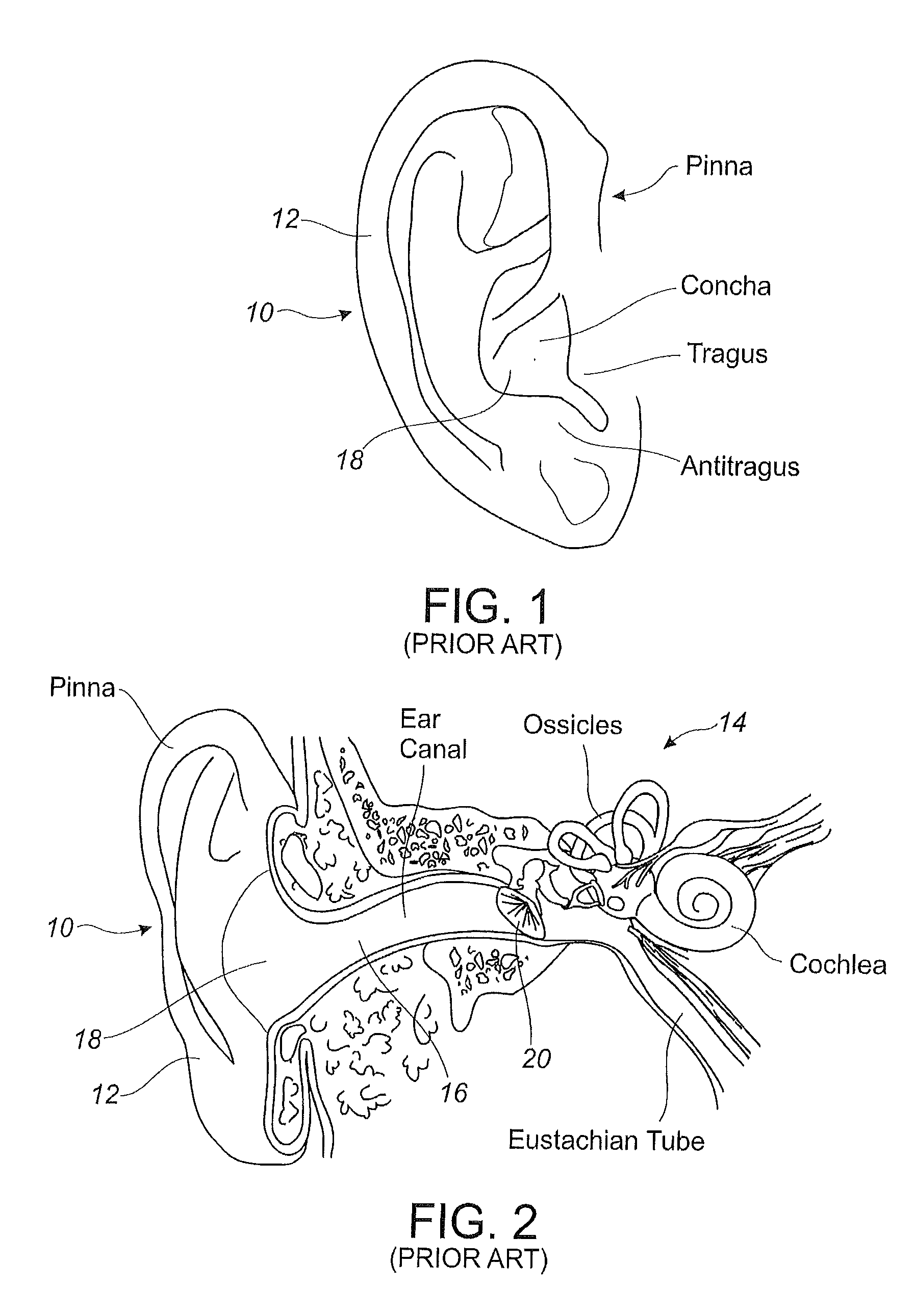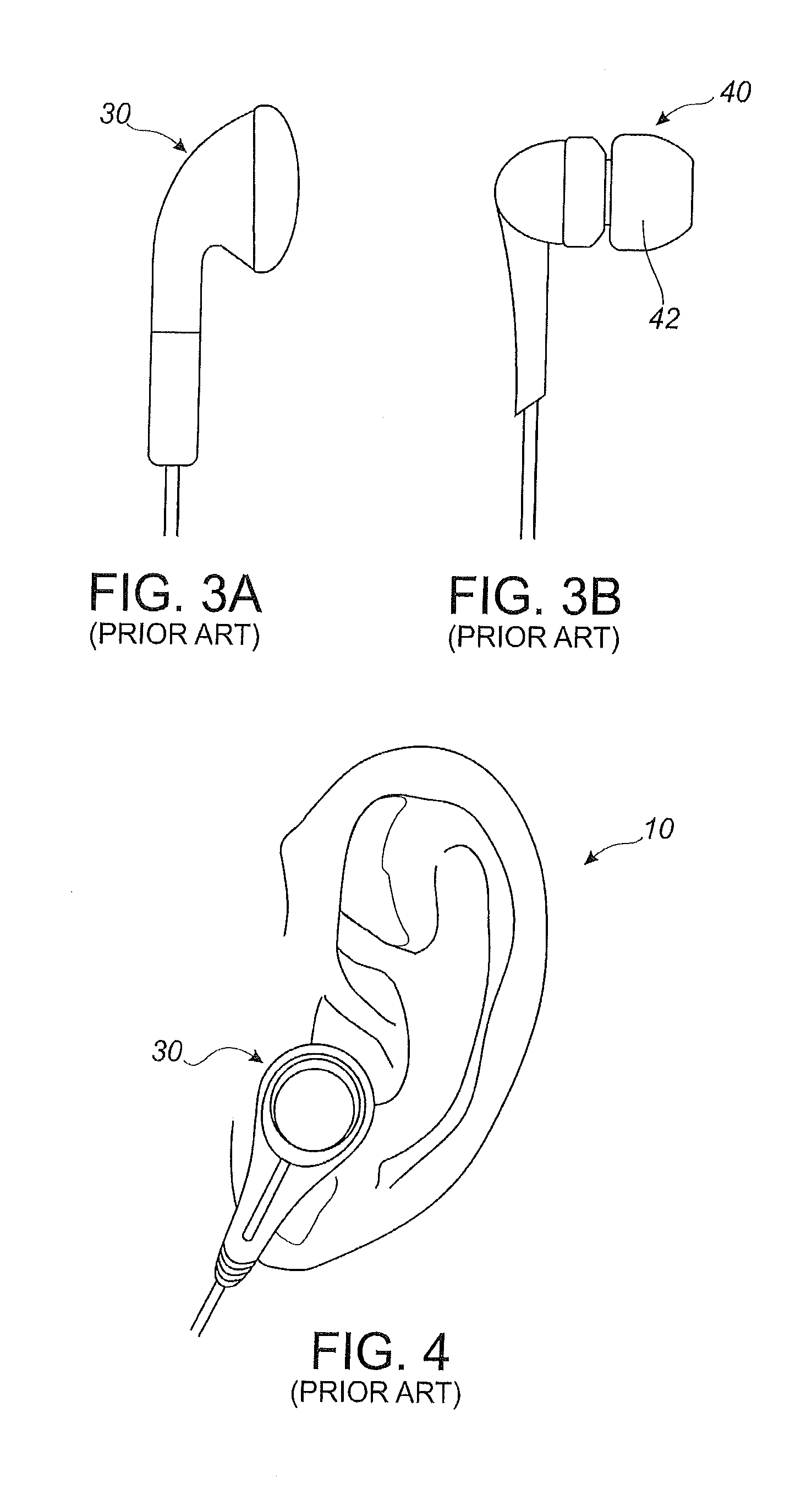Canal phones with structure and method for selectively passing or blocking environmental ambient sound and switchable electrical connections
a technology of canal phones and structures, applied in the direction of electrical transducers, earpiece/earphone attachments, transducer details, etc., can solve the problems of acoustic isolation from a properly fitted canal phone, frustrating a listener who may momentarily, and not being helpful in many situations, so as to facilitate the introduction and enhance the intelligibility of speech
- Summary
- Abstract
- Description
- Claims
- Application Information
AI Technical Summary
Benefits of technology
Problems solved by technology
Method used
Image
Examples
Embodiment Construction
[0036]Referring now to the drawing FIGS. 1-15, FIGS. 1 and 2 illustrate, for purposes of convenient reference, a human ear 10, FIG. 1 showing its external portions 12 andFIG. 2 showing, in cross-section, its inner portions generally indicated at 14. The inner ear includes, for purposes of this description, an ear canal 16 leading from the concha 18 of the external ear to the ear drum 20.
[0037]As discussed above, two types of ear-inserted audio devices are in general use for providing audio signals to a listener in a convenient way, a conventional ear bud 30 as illustrated diagrammatically in FIG. 3A and a conventional canal phone 40, as illustrated diagrammatically in FIG. 3B. Both of these devices are designed to fit in the ear canal of a listener's ear, as illustrated in FIGS. 4 and 5 by the ear bud 30 positioned in the ear 10, and in FIG. 6 by the canal phone 40 positioned in ear 10. As known, such ear buds and canal phones transmit sound from a suitable source to the listener's ...
PUM
 Login to View More
Login to View More Abstract
Description
Claims
Application Information
 Login to View More
Login to View More - R&D
- Intellectual Property
- Life Sciences
- Materials
- Tech Scout
- Unparalleled Data Quality
- Higher Quality Content
- 60% Fewer Hallucinations
Browse by: Latest US Patents, China's latest patents, Technical Efficacy Thesaurus, Application Domain, Technology Topic, Popular Technical Reports.
© 2025 PatSnap. All rights reserved.Legal|Privacy policy|Modern Slavery Act Transparency Statement|Sitemap|About US| Contact US: help@patsnap.com



